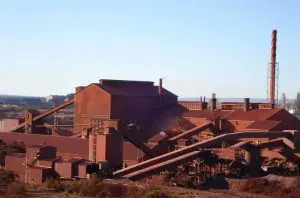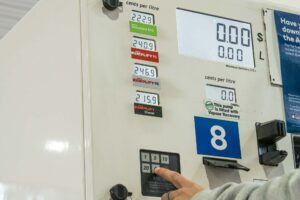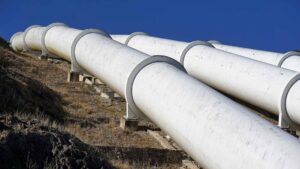We need to start aggressively deploying all forms of carbon-free power if we are to avoid catastrophic global warming, starting with the lowest cost ones.
That’s what makes the events of March 12, 2011 so tragic. It (once again) shattered the myth that you can do nuclear power on the cheap.
As CAP’s Richard Caperton and I wrote in a CNN piece 2 days after the tragedy:
New nuclear reactors are phenomenally expensive, costing up to $10 billion dollars apiece. Exelon CEO John Rowe said recently that the combination of low natural gas prices and failure of Congress to put a price on carbon dioxide pollution pushes back any significant nuclear renaissance by a “decade, maybe two.”
The U.S. nuclear industry has long argued that new reactors are prohibitively expensive because of an overly burdensome site selection and permitting process, which they say unnecessarily drives up costs. But, in fact, new nuclear plants have seen soaring prices not just in Florida, Texas and other states — but in Finland, Turkey and Canada.
New reactors are intrinsically expensive because they must be able to withstand virtually any risk that we can imagine, including human error and major disasters. Why? Because when the potential result of a disaster is the poisoning — and ultimately, death — of thousands of people, even the most remote threats must be eliminated.
Insurers know that the results of a nuclear catastrophe would be ruinous on a scale that would overwhelm any private company, which is why they won’t insure nuclear plants. Instead, the U.S. government — which is to say taxpayers — takes on the liability for nuclear reactors.
I have always included about one wedge of nuclear power in my “full global warming solution” for stabilising at 350 to 450 ppm. Of course we need 12-14 of those wedges (and we need to deploy them in 4 decades not 5), so nuclear power is unlikely to be even 10 per cent of the answer. That’s why I don’t put it in the “major climate solution” category, especially in the near term, which is what counts the most.
Based on a 2007 Keystone report, even one wedge of nukes by 2050 would require adding globally, an average of 17 plants each year, while building an average of 9 plants a year to replace those that will be retired, for a total of one nuclear plant every two weeks for four decades — plus 10 Yucca Mountains to store the waste. It is increasingly unlikely it will be among the cheaper options (see below). And the uranium supply and non-proliferation issues for even that scale of deployment are quite serious. See “An introduction to nuclear power.”
The Fukushima disaster, however, accelerated the phase out of nukes in Germany and “all but two of Japan’s 54 commercial reactors have gone offline.” Given the need to keep climate forcings as low as possible, I wouldn’t shutter existing nukes until the clean energy replacements are online, and would prefer to spend big bucks to make them safer. But I can understand where the Germans and Japanese are coming from.
The UK Guardian reports, “Dramatic fall in new nuclear power stations after Fukushima,” noting “Italy and Switzerland have also voted against nuclear energy.” In this country, E&E News (subs. req’d) reports:
Seventy-two percent of those asked answered “no” to the question, “Do you think taxpayers should take on the risk for the construction of new nuclear power reactors in the United States through billions of dollars in new federal loan guarantees for new reactors?”
Again, I don’t think safety in and of itself is the issue, though that is clearly what the nuclear advocates want the debate to be about. The issue is cost — and the need to take the time and spend the money to ensure we don’t have another partial meltdown (or worse) in this country, the need to avoid turning a billion-dollar asset into a 10-billion-dollar liability.
Strikingly, the literature suggests that “nuclear power has a negative learning curve“:
Drawing on largely unknown public records, the paper reveals for the first time both absolute as well as yearly and specific reactor costs and their evolution over time. Its most significant finding is that even this most successful nuclear scale-up was characterized by a substantial escalation of real-term construction costs.
Fig. 13. Average and min/max reactor construction costs per year of completion date for US and France versus cumulative capacity completed
We’ve known for a while that the cost of new nuclear power plants in this county have been soaring (see Nuclear power: The price is not right and Exclusive analysis: The staggering cost of new nuclear power).
Before 2007, price estimates of $4000/kw for new U.S. nukes were common, but by October 2007 Moody’s Investors Service report, “New Nuclear Generation in the United States,” concluded, “Moody’s believes the all-in cost of a nuclear generating facility could come in at between $5,000 – $6,000/kw.” That same month, Florida Power and Light, “a leader in nuclear power generation,” presented its detailed cost estimate for new nukes to the Florida Public Service Commission. It concluded that two units totaling 2,200 megawatts would cost from $5,500 to $8,100 per kilowatt – $12 billion to $18 billion total! In 2008, Progress Energy informed state regulators that the twin 1,100-megawatt plants it intended to build in Florida would cost $14 billion, which “triples estimates the utility offered little more than a year ago.” That would be more than $6,400 a kilowatt. (And that didn’t even count the 200-mile $3 billion transmission system utility needs, which would bring the price up to a staggering $7,700 a kilowatt).
It is worth noting that renewable energy technologies have classic learning curves. Here is solar:
Wind power looks similar.

Yes, supply bottle-necks and other factors can temporarily slow or slightly reverse the trends in the short-term, but increased deployment has clearly lead to staggering price drops.
The trend in nuclear, however, has been in the reverse direction for decades. Indeed, the cost of new nuclear power plant have continued to escalate in the United States, France, and other countries since 2000:
- Turkey’s Turkey’s only bidder for first nuclear plant offers a price of 21 cents per kilowatt-hour
- French nuclear giant “Areva has acknowledged that the cost of a new reactor today would be as much as 6 billion euros, or $8 billion, double the price offered to the Finns.” (5/09)
- Toshiba tells San Antonio its new twin $13 billion nukes will cost $4 billion more. The city balks. (10/09)
Bill Gates explained last year the reason he invests so much in nuclear power R&D: “The good news about nuclear is that there has hardly been any innovation.” Talk about magical thinking.
One can hope that next generation nukes come down in price and are scalable enough to make a difference, say, post-2030. But the bad news is we can’t wait. As International Energy Agency explained last year in its 2011 World Energy Outlook [WEO]
“On planned policies, rising fossil energy use will lead to irreversible and potentially catastrophic climate change”….
“Delaying action is a false economy: for every $1 of investment in cleaner technology that is avoided in the power sector before 2020, an additional $4.30 would need to be spent after 2020 to compensate for the increased emissions.”
The time to act is now (see “Study Confirms Optimal Climate Strategy: Deploy, Deploy, Deploy, Research and Develop, Deploy, Deploy, Deploy“ —and yes we need to do those simultaneously, the repetition is meant to represent the relative spending levels).
This article was originally published by Climate Progress – www.thinkprogress.org. Reproduced with permission.










